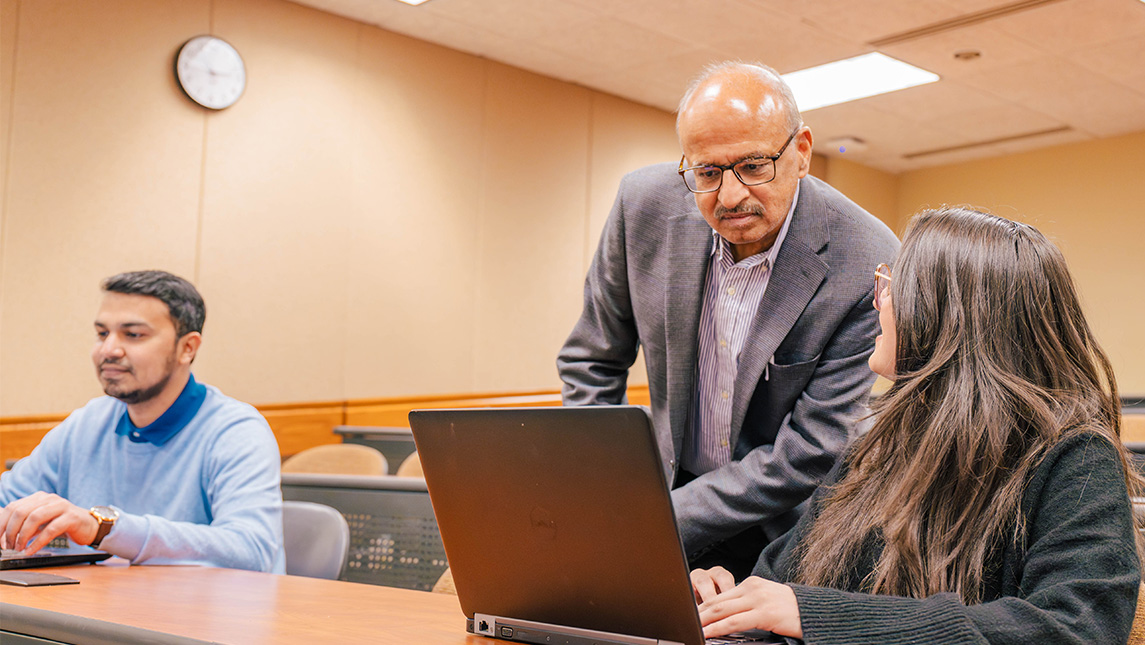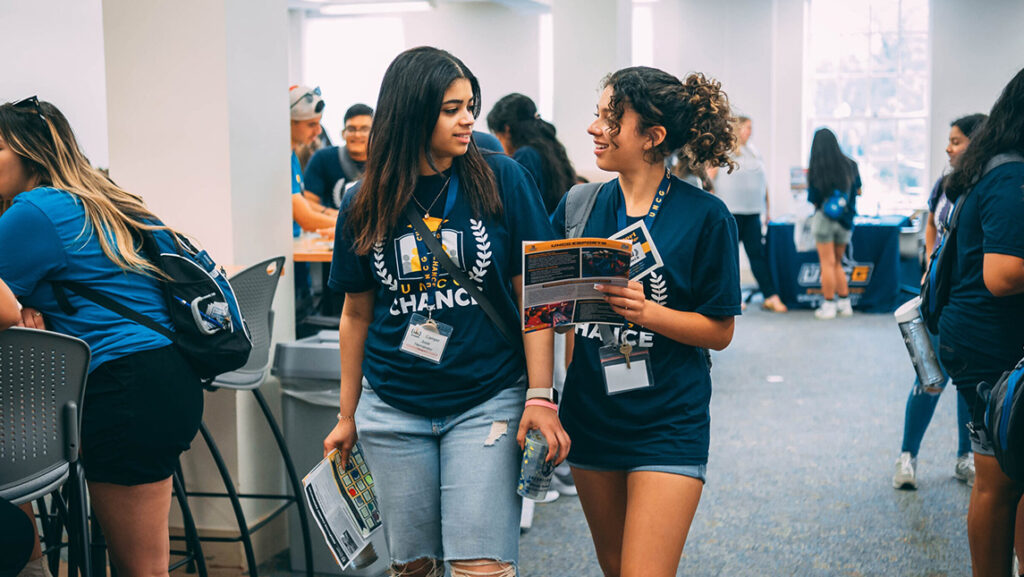The field of information technology is one of the most entwined with peoples’ day-to-day lives, but also one of the least understood.
Dr. Prashant Palvia, with UNC Greensboro’s Department of Information Systems and Supply Chain Management, wanted to empower employers with the knowledge of what makes their employees thrive, particularly if those employees live thousands of miles away in another country.
The Joe Rosenthal Excellence Professor in the Bryan School of Business and Economics is close to completing the World IT Project, a ten-year study exploring the technological, organizational, and individual characteristics of IT workers in 37 countries.
“I think it’s a landmark project, not just for IT but for UNCG,” he says.
His research team published their findings in a book and more than two dozen articles and conference papers, with more papers in the submission process. “In every paper that we write, we provide more implications, more advice for organizations,” says Palvia. “Ideas on how to enhance the factors that are conducive to worker retention.”
Palvia hopes all these publications will lead to a better work environment across the world. “Many companies are multi-national today,” he says. “They have IT operations not only in the US, but in Europe, the Far East, and India. If they treat employees the same way all over the world, they’re less likely to be successful.”
An idea becomes reality
The World IT Project launched in 2013, but the idea took hold in the mid-2000s while Palvia was chair of the Global Information Technology Management Association (GITMA) Conference. Because previous studies of IT-related issues mainly centered around the United States and a few other Western countries, Palvia wished to expand that research to the rest of the globe, to understand IT departments within the context of their unique cultural, sociopolitical, and religious environments.
“Every year that we met at the conference, I would run a seminar or workshop about the idea of this project,” he says. “The goal was to see the various perspectives of different countries which vary in their economic development, political views, demographics, so on and so forth.”
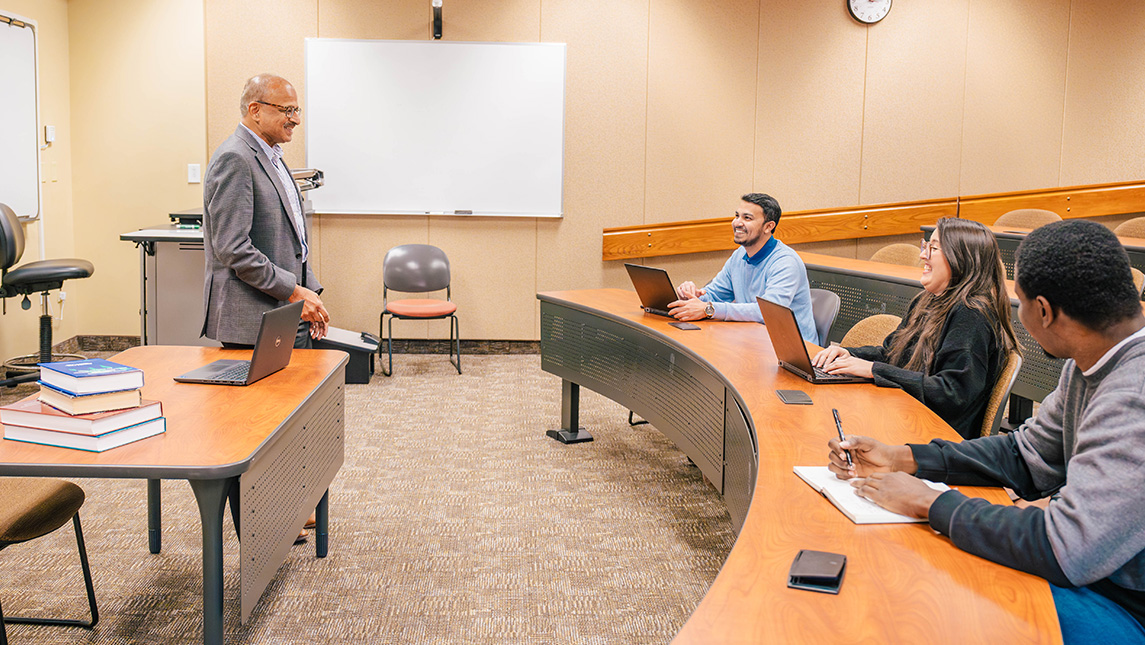
As one of his core team members, he selected former student Tim Jacks ’12, now an associate professor at the Southern University of Illinois Edwardsville. Jacks worked in IT before coming to UNCG to earn his doctoral degree. His dissertation centered on occupational IT culture.
Even with his firsthand experience, Jacks says the data from other countries often surprised him. “Occupationally, we have a lot in common,” he says, “But then we dig deeper into attitudes toward the role of technology in society, the role of information, or its impact on privacy.” Their French counterparts, for example, are far more private. Some international data collectors had to be careful with the wording on the surveys for fear of political repercussions.
Besides Palvia and Jacks, The World IT Project team has three other members from different parts of the world: Dr. Jaideep Ghosh from Shiv Nadar University in India, Dr. Alexander Serenko from Ontario Tech University in Canada, and Dr. Aykut Turan from Sakarya University in Turkey.
Jacks was honored to keep publishing with Palvia. “I wouldn’t have otherwise gotten to meet people around the world that I respect, that I consider my friends now,” he says.
Global perspectives
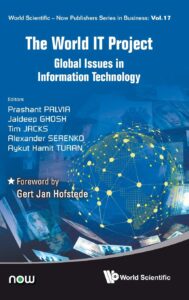
The core team managed an international data collection team. “We outsourced data collection, as it was important to have someone local gather the information and translate it,” Jacks explains.
The World IT Project surpasses similar research in terms of sheer scale. “We collected about 11,000 observations,” says Palvia. “Typically, most data collection and survey-based projects like this collect somewhere between 100 and 500 respondents, and there are one to two topics covered in a published paper. We had 15 to 20 related topics.”
They sorted topics into three categories – technological, organizational, and individual. Palvia says, “For individual issues, for example, we look at subtopics like techno stress, job security, turnover, work exhaustion, work-home balance.”
One of their papers, “From fun-lovers to institutionalists: Uncovering pluralism in IT occupational culture,” explored the subcultures that form among IT workers. Another, “Insights from the World IT Project survey on IS organizational trends,” broke down how IT workers prioritized 18 organizational issues, such as equipment reliability, outsourcing, or project management. In August, they submitted “The Flight of Women from the IT Profession: Nuances and Global Perspectives,” which explores the unique challenges faced by female IT workers.

Jacks has at least one anecdote that speaks to the value of The World IT Project. It comes from his wife, who was having trouble communicating with a software company from another country. Then she picked up their book. Jacks says, “She learned that this country was more collectivist than the U.S. Once she changed her language from ‘You need to do this’ to ‘We need to do this,’ it was like a key unlocking the door.”
Story by Janet Imrick, University Communications
Photography by Sean Norona, University Communications
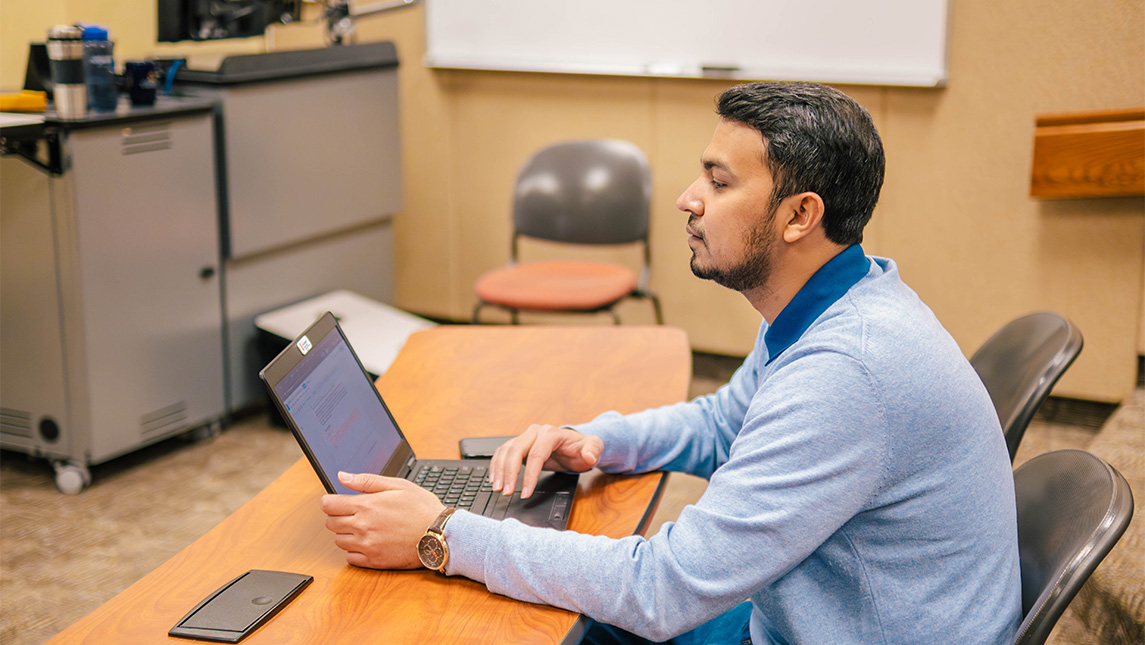
Are you plugged in? Keep up with work trends that benefit employers and employees.
